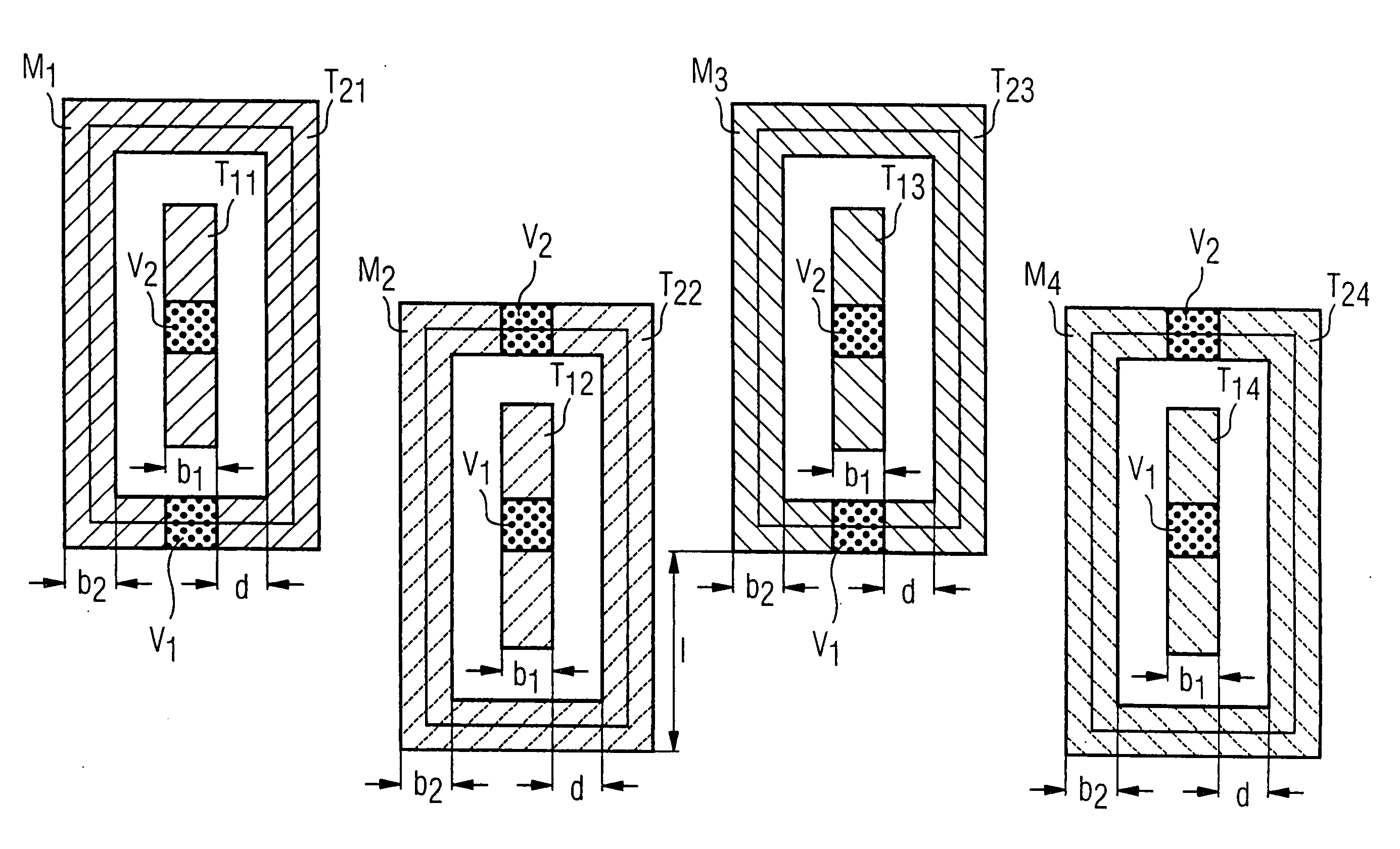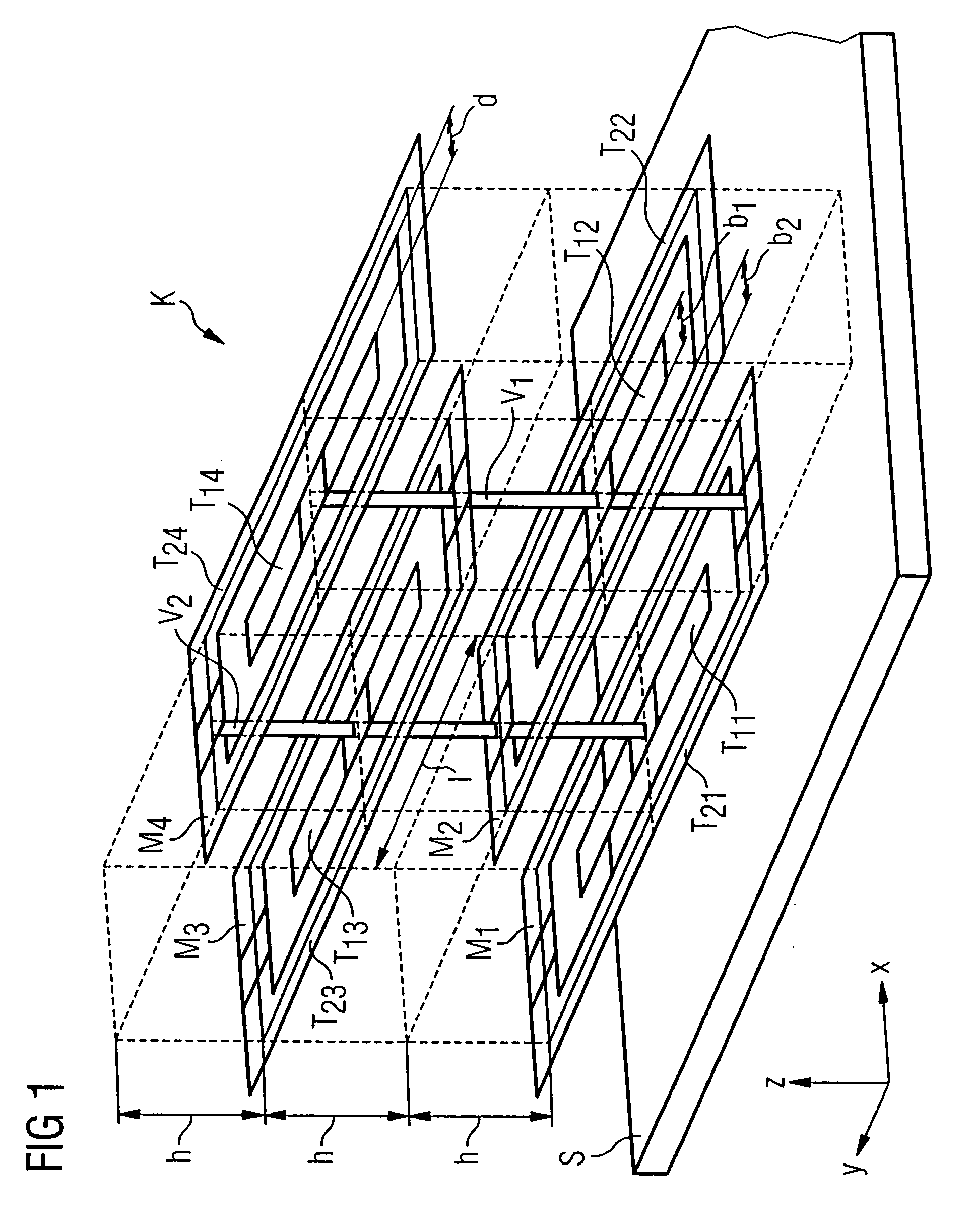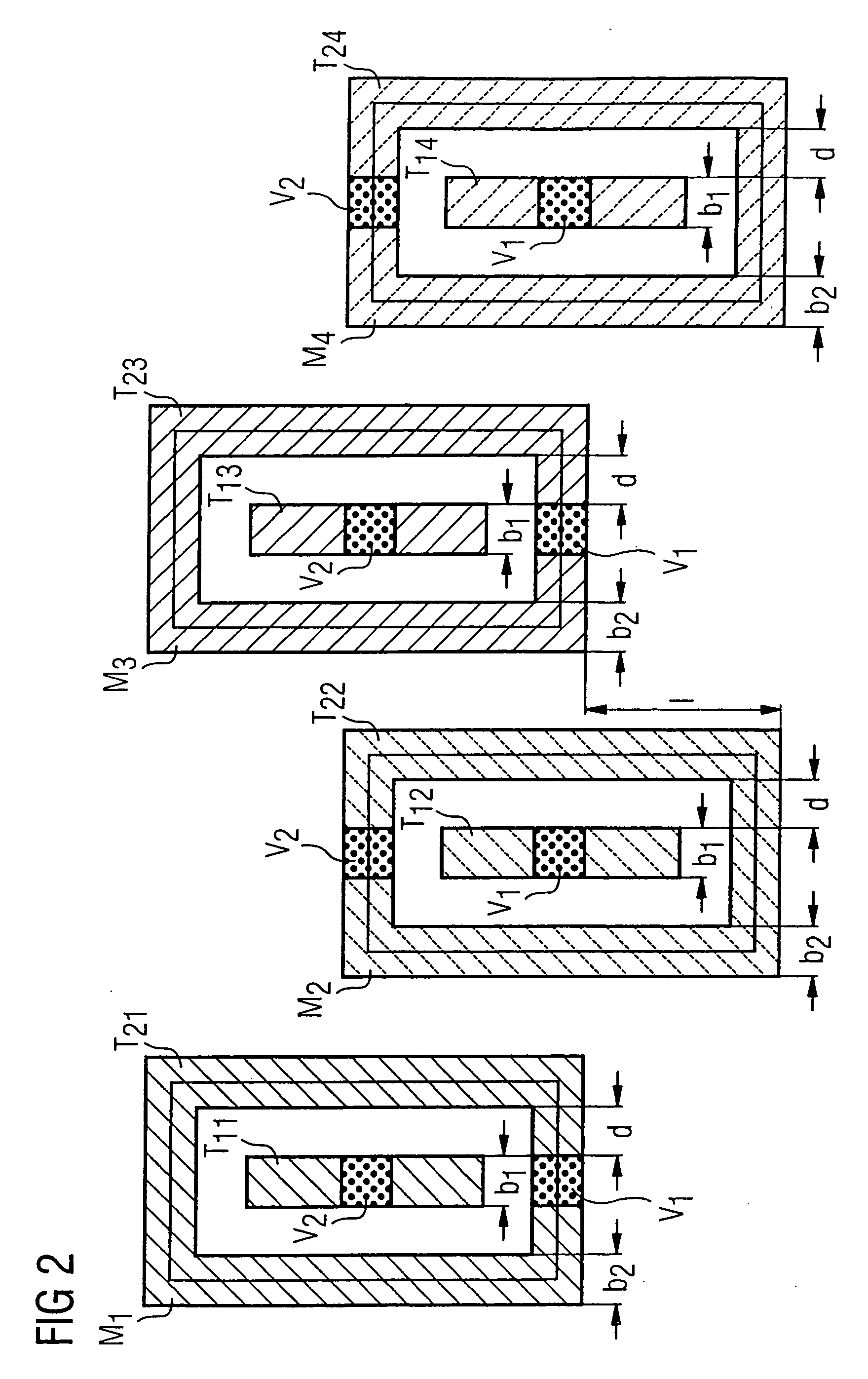Device with integrated capacitance structure
a capacitance structure and integrated technology, applied in semiconductor devices, semiconductor/solid-state device details, capacitors, etc., can solve the problems of defective contact-connection, different structure dimensions of metal dots and lattice frames, disadvantages in design, layout and production engineering, etc., to achieve the maximum utilization of vertical capacitance portions, ensure the effect of high yield and low thermomechanical loading
- Summary
- Abstract
- Description
- Claims
- Application Information
AI Technical Summary
Benefits of technology
Problems solved by technology
Method used
Image
Examples
Embodiment Construction
[0025] In FIG. 1, a semiconductor device has a capacitance arrangement or structure K embedded in an insulation layer or a system of insulation layers (not illustrated). The insulation layer used may be a layer or a layer sequence comprising silicon dioxide (SiO2), silicon nitride (Si3N4) or some other suitable insulating material. The insulation layer and the capacitance structure K are situated above a substrate S made, for example, of silicon (Si) or silicon carbide (SiC). An integrated circuit or a semiconductor component may be realized in the semiconductor substrate, so that the device is formed by this and the capacitance structure K. The substrate S may also be formed by a printed circuit or the like.
[0026] A first rewiring plane M1 is patterned in such a way that a first partial structure T11 is enclosed by a second partial structure T21. The distance between the two partial structures should preferably not exceed 250 nm in order to ensure optimum utilization of area. The ...
PUM
 Login to View More
Login to View More Abstract
Description
Claims
Application Information
 Login to View More
Login to View More - R&D
- Intellectual Property
- Life Sciences
- Materials
- Tech Scout
- Unparalleled Data Quality
- Higher Quality Content
- 60% Fewer Hallucinations
Browse by: Latest US Patents, China's latest patents, Technical Efficacy Thesaurus, Application Domain, Technology Topic, Popular Technical Reports.
© 2025 PatSnap. All rights reserved.Legal|Privacy policy|Modern Slavery Act Transparency Statement|Sitemap|About US| Contact US: help@patsnap.com



